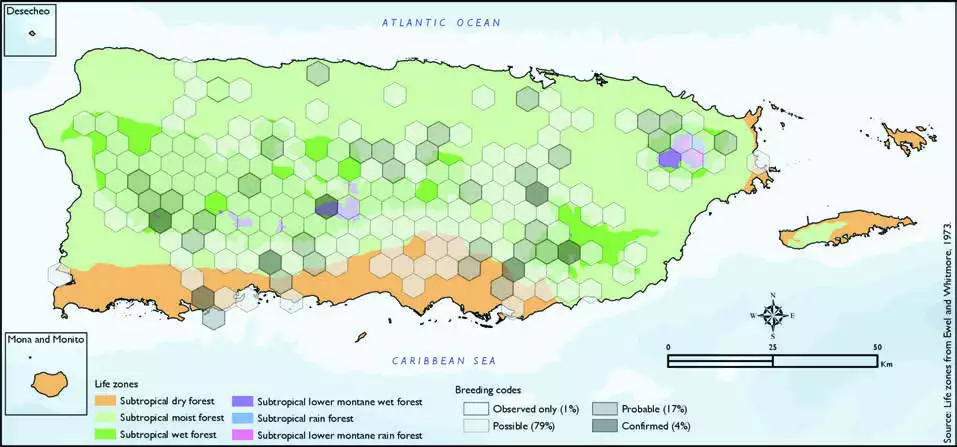Antillean Euphonia
Description
The Antillean euphonia (Chlorophonia musica) is a bird species in the finch family, Fringillidae (formerly in Thraupidae).
It is found in all the main islands of the Lesser Antilles, as well as Hispaniola (Dominican Republic and Haiti) and Puerto Rico.
Its natural habitats are subtropical or tropical dry forest, subtropical or tropical moist lowland forest, and heavily degraded former forest.
Distribution & Habitat
The Antillean Euphonia occurs on Hispaniola, Puerto Rico, and
many of the islands throughout
the eastern Caribbean (Oberle
2018). It is a resident species in
Puerto Rico (Raffaele 1989a),
where it is common in mountain
forests, the northern karst
region, and dry forests within
the southwestern area (Ventosa-
Febles and others 2005). On
Vieques, the species is described
as a rare former breeder
for which an attempted re-
introduction failed to re-establish
the species (Gemmill 2015). This
species inhabits mountain forests,
shade coffee plantations, lowland
dry scrub forests (Oberle 2018),
and the dry hills of the south
coast up to the rainy dwarf forest
at the highest elevations (Raffaele 1989a). The Antillean Euphonia
feeds heavily on the fruits of
mistletoes (Loranthaceae),
hemiparasitic plants found on
trees. The availability of these
fruits may infl uence the species
distribution. The atlas fieldwork
yielded a total of 273 records
within 185 hexagons or 39
percent of the 479 total hexagons
(see map). Of the 185 hexagons
where this species was found,
breeding met the atlas definition
of confirmed in 4 percent (7) of
the hexagons, probable in 17
percent (31), and possible in 79
percent (146), while the species
was observed in 1 percent (1)
of the hexagons but without
evidence of breeding (see map).
The species was not found on
Vieques and Culebra during
atlas surveys. Antillean Euphonia distribution. The map shows the highest breeding code by hexagon and overlaying the ecological life zones in
Puerto Rico. Note: percentages may not total 100 due to rounding. 255Antillean Euphonia/Jilguero

Breeding Habits
The Antillean Euphonia is a diurnal species that nests on
trees or among vines, epiphytes,
or forest palms from January
to July, according to previously
published reports (Oberle 2018).
Atlas results show that Antillean
Euphonia breeding activity
extends throughout the year but
is most active from March to
June, with a peak in June (see
chart). This seasonal pattern of
Antillean Euphonia breeding
appears to coincide in each of
the life zones with no evidence
to suggest breeding times differ among the life zones. Results
show that the Antillean Euphonia
mostly breeds within the
subtropical moist forest life zone
(49 percent of the hexagons).
Breeding for this species was
also reported for the subtropical
wet and lower montane wet
forest life zones (39 percent of
the hexagons), the subtropical
dry forest life zone (12 percent
of the hexagons), and for only
one hexagon (1 percent of
hexagons) in the subtropical rain
and lower montane rain forest
life zones (see table and map).
Conservation
The Antillean Euphonia is listed as a species of least
concern by the IUCN (BirdLife
International 2017). Locally,
this species is not listed in any
of the threatened categories of
PRDNER and USFWS. In Puerto
Rico, the Antillean Euphonia has
a protected habitat in land of 14
percent or 604 km2 of the total area covered by the hexagons
where evidence of breeding
was found for this species
(4402 km2).
Related Species
Family:
finch